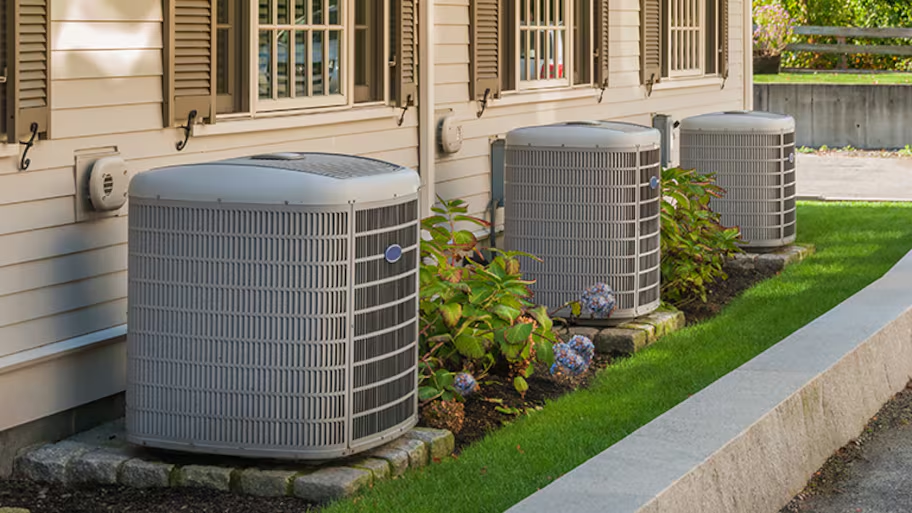
What you’ll pay in Columbus, OH, for furnace repairs depends on many factors. Here’s a breakdown of what can go wrong and the cost to fix those issues.
Keeping your home warm in the winter requires a well-functioning radiator


Radiators are home heating systems that use hot water or steam to warm your house.
Different types of radiators include panel radiators, baseboard radiators, electric radiators, and towel radiators.
Regular bleeding (releasing trapped air) is a vital maintenance task for keeping your radiator functional and efficient.
As temperatures start to drop in the fall, it’s always a treat to turn on the heat and get cozy and we couldn’t enjoy all the fall feels without our trusty radiators. How do radiators work? Radiators are vital components in heating systems as they facilitate the transfer of heat from a central source to individual rooms, ensuring a comfortable indoor temperature during colder months. They play a crucial role in maintaining a cozy and habitable environment, making them indispensable for effective heating in homes and buildings.
Keep reading for insight into how radiators work and how to get the most out of yours.
A radiator is a crucial component in heating systems designed to transfer heat from a central source to individual rooms or spaces within a building. Typically made of materials like cast iron or steel, radiators are characterized by their distinctive finned or ribbed design, which maximizes the surface area for efficient heat exchange.
The process begins with the central heating system, which can use hot water or steam to generate heat. This heated fluid then circulates through the radiator's network of pipes or channels. As the hot fluid flows through the radiator, it radiates thermal energy into the surrounding air. This process relies on conduction and convection: the hot fluid heats the metal surfaces (conduction), and the warm air rises as cooler air is drawn in to replace it (convection).
By this mechanism, radiators effectively warm up rooms, making them comfortable during colder seasons. The precise design and type of radiator can vary, offering different levels of efficiency and aesthetic appeal, but the fundamental function remains the same—to transfer heat and maintain a comfortable indoor temperature.
A radiator consists of several essential components that work together to facilitate the efficient transfer of heat within a heating system. These components include:
Core: The core is the central element of the radiator, typically made of materials like cast iron or aluminum. It features a network of tubes or channels through which heated fluid (usually water or steam) passes.
Fins or ribs: Radiators have fins or ribs attached to the core. These provide a larger surface area for heat exchange, allowing more efficient transfer of thermal energy from the fluid to the surrounding air.
Inlet and outlet ports: Radiators have inlet and outlet ports or connections through which the hot fluid enters and exits. These connections are crucial for the circulation of the heated medium.
Valves: Radiators often incorporate control valves or thermostatic valves that regulate the flow of the heated fluid. These valves enable users to adjust the temperature in individual rooms or zones.
Mounting brackets: Radiators are typically mounted on walls or floors using brackets, ensuring they remain stable and secure.

To enhance the energy efficiency of radiators and reduce heating costs, consider these steps:
Install Thermostatic Radiator Valves (TRVs): TRVs enable you to control the temperature in individual rooms, preventing overheating and optimizing energy use.
Proper insulation: Ensure your home is well-insulated to retain heat, allowing radiators to work more effectively.
Zoning: Create heating zones within your home to direct heat where needed, reducing energy wastage in unoccupied areas.
Upgrade radiators: Consider modern, energy-efficient radiator models that distribute heat more effectively.
Boiler maintenance: Ensure your boiler is regularly serviced to maximize its efficiency and overall heating system performance.
From average costs to expert advice, get all the answers you need to get your job done.

What you’ll pay in Columbus, OH, for furnace repairs depends on many factors. Here’s a breakdown of what can go wrong and the cost to fix those issues.

HVAC replacement costs depend on a lot of factors, like unit type, size, and labor. See what you can expect to pay for HVAC replacement here.

Repairing ductwork in a crawl space is frustrating and difficult, which is reflected in the cost. Learn why limited access results in a premium cost beyond just a simple increase in labor hours.

Learn how to reset your boiler safely with our comprehensive guide. Don't let heating issues disrupt your comfort this winter.

If you’re having issues with your heating and cooling system, it’s probably time to discuss these heat pump questions with your HVAC pro.

Crawl space dehumidifier costs are worth it if you consider their effect on energy bills and avoiding moisture damage. Learn what makes up the total cost of the project.